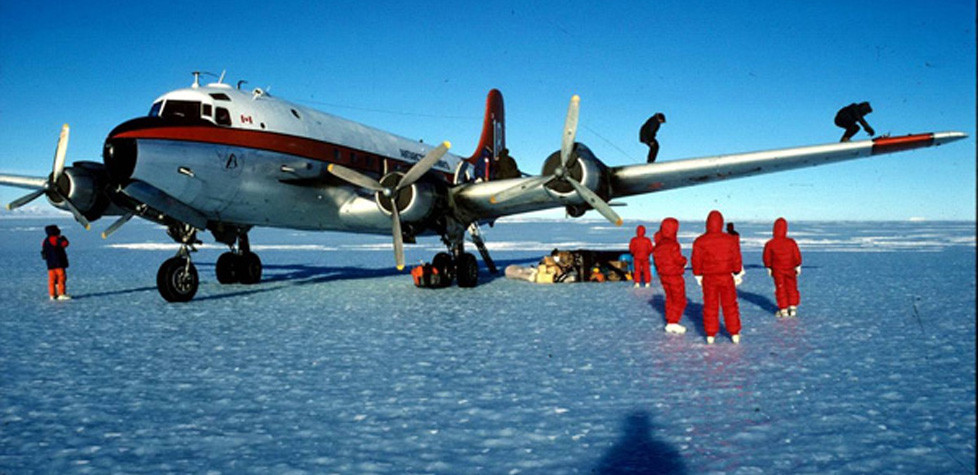Can I Travel To South Pole with my family? Absolutely! Familycircletravel.net is here to guide you through the extraordinary journey to the bottom of the world. We’ll explore the options, from scenic flights to adventurous ski expeditions, ensuring your family creates unforgettable memories in this unique destination. Get ready to discover family travel tips, expedition options, and South Pole adventures.
1. Understanding the South Poles: A Family Guide
When planning a trip to the “South Pole,” it’s important to know that there are actually four different South Poles. Let’s break them down for your family’s understanding:
-
Geographic South Pole: This is the one most people think of – the southernmost point on Earth, located at 90 degrees south latitude.
-
South Magnetic Pole: This is where a compass needle points, influenced by the Earth’s magnetic field. It’s constantly moving!
-
South Geomagnetic Pole: This represents the overall trend of Earth’s magnetic field extending into space.
-
Pole of Relative Inaccessibility (POI): The point on the Antarctic ice sheet farthest from any coastline.
For most travelers, the Geographic South Pole is the ultimate goal.
Fun Fact: Research has also shown that the ‘north’ and ‘south’ magnetic poles have swapped places over the years. This phenomenon is known as Polar Reversals. Scientists discovered a history of Polar Reversals by studying magma samples around the magnetic poles. Polar Reversals take thousands of years to occur and flip every 300,000 or so years.
2. A Glimpse into South Pole Travel History
The allure of the South Pole has captivated explorers for centuries. Here’s a brief look at its travel history:
-
The Heroic Age: Expeditions in the late 1800s and early 1900s, like those led by Captain Robert Falcon Scott and Ernest Shackleton, faced incredible challenges in their quest to reach the South Pole.
-
Amundsen vs. Scott: In 1911, Roald Amundsen’s Norwegian team was the first to reach the Geographic South Pole, using dogsleds. Scott’s team arrived shortly after, but tragically perished on their return journey.
-
Modern Era: The International Geophysical Year (1957-58) saw the establishment of research stations, including the Amundsen-Scott South Pole Station.
-
Commercial Travel: Since the late 1980s, commercial travel to Antarctica has become increasingly accessible, offering opportunities for adventurers and families to experience this unique destination.
3. Is Commercial South Pole Travel Possible Today?
Absolutely! Getting to the South Pole is no longer limited to scientists and researchers.
-
Adventure Network International (ANI): In 1987, ANI made history by landing a wheeled DC-4 aircraft on a blue-ice runway in Antarctica, paving the way for non-governmental expeditions.
-
Antarctic Logistics & Expeditions (ALE): ALE now offers various options for modern-day explorers to travel to the South Pole, ranging from adventurous vacations to grueling expeditions.
4. What Are My Options For Traveling to The South Pole?
There are two main ways to visit the South Pole:
4.1. Flying to the South Pole: A Quick Family Adventure

Flying is the quickest and easiest way to experience the South Pole with your family.
- Starting Point: You’ll begin with an intercontinental flight to Union Glacier, ALE’s base camp.
- Day Trip: A 4-5.5-hour flight will take you to the South Pole for 2-3 hours of exploration before returning to the comfort of Union Glacier. This is a great option for families with younger children.
- Overnight Stay: For a more immersive experience, consider staying overnight at ALE’s South Pole Field Camp. The camp features Arctic Oven Tents, a dining tent with a chef, and toilet facilities. Each tent is named after a famous Antarctic explorer.
- Proximity: ALE’s South Pole camp sits only 0.6 miles (1km) from the Geographic South Pole marker, the Ceremonial Pole and the Amundsen-Scott South Pole station.
4.2. Skiing to the South Pole: An Extreme Family Challenge
For adventurous families with older children and teens, skiing to the South Pole offers an unparalleled experience.
- Extreme Expedition: This option requires prior ski and winter outdoor experience, as well as a commitment to an intense training program.
- Ski the Last Degree: Adventurers are dropped off at 89°S latitude and ski the last 60 nautical miles (69 mi/111km) to the Geographic South Pole.
- Longer Expeditions: For the ultimate challenge, consider a longer expedition with various route options.
According to the Family Travel Association, interest in adventure travel has increased by 30% among families in the past five years.
5. Preparing for a South Pole Adventure: Family Travel Tips
Planning a South Pole trip requires careful preparation. Here are some family travel tips to ensure a safe and enjoyable experience:
5.1. Essential Gear and Clothing
- Layering: Dress in layers to regulate body temperature.
- Waterproof Outerwear: Invest in high-quality waterproof and windproof jackets and pants.
- Insulated Boots: Choose boots with excellent insulation and traction.
- Gloves and Mittens: Pack multiple pairs of gloves and mittens, including waterproof options.
- Hats and Face Coverings: Protect your head, face, and neck from the cold.
- Sunglasses and Sunscreen: The sun reflects intensely off the snow and ice, so protect your eyes and skin.
5.2. Health and Safety Considerations
- Altitude Sickness: The South Pole is at a high altitude, so be aware of the symptoms of altitude sickness.
- Medical Consultation: Consult your doctor before traveling to ensure everyone in your family is healthy enough for the trip.
- Travel Insurance: Purchase comprehensive travel insurance that covers medical emergencies and evacuation.
- First-Aid Kit: Pack a well-stocked first-aid kit with necessary medications.
- Emergency Communication: Carry a satellite phone or other emergency communication device.
5.3. Physical Fitness
- Training: Engage in regular physical activity to improve your family’s fitness levels.
- Endurance Training: Focus on endurance exercises like hiking, running, and swimming.
- Cold Weather Acclimatization: If possible, spend time in cold weather before the trip to acclimatize your bodies.
5.4. Mental Preparation
- Research: Learn about the South Pole, its history, and its environment.
- Set Realistic Expectations: Be prepared for extreme conditions and potential challenges.
- Positive Attitude: Maintain a positive attitude and encourage each other throughout the journey.
5.5. Packing List Essentials
- Thermal Underwear: Moisture-wicking thermal underwear is crucial for staying warm.
- Fleece Jackets: Fleece jackets provide excellent insulation.
- Down Parka: A high-quality down parka is essential for extreme cold.
- Waterproof Pants: Waterproof pants will protect you from snow and wind.
- Insulated Gloves: Insulated gloves will keep your hands warm in sub-zero temperatures.
- Warm Socks: Pack plenty of warm socks, preferably wool or synthetic blends.
- Sunglasses: Protect your eyes from the intense sun glare.
- Sunscreen: Use a high SPF sunscreen to protect your skin.
- Lip Balm: Keep your lips moisturized to prevent chapping.
- Camera: Capture the incredible scenery and memories.
- Binoculars: Enhance your viewing of wildlife and landscapes.
- Books and Games: Bring entertainment for downtime.
5.6. Family Activities and Entertainment
- Photography: Encourage your family to capture the stunning landscapes and wildlife through photography.
- Journaling: Keep a journal to document your experiences and reflections.
- Games: Bring board games or card games for entertainment during downtime.
- Storytelling: Share stories and experiences around the campfire.
- Educational Activities: Incorporate educational activities to learn about the South Pole’s history, science, and environment.
6. What Can My Family See at the South Pole?
When Amundsen and Scott arrived at the South Pole, it was an empty expanse of ice, stretching northwards in all directions. These days, the South Pole is a crossroads for science, history and adventure.
-
Amundsen-Scott South Pole Station: A large US base comprised of a central, elevated station, outlying science labs and facilities, and a skiway.
-
Geographic South Pole Marker: A decorative survey marker commemorating the achievements of Amundsen and Scott, which is moved each January 1st to mark the precise location.
-
Ceremonial Pole: A striped pole with a reflective ball on top, surrounded by the flags of the original signatories to the Antarctic Treaty.
7. Frequently Asked Questions About South Pole Travel
Here are some common questions about traveling to the South Pole with your family:
7.1. How do I get to the South Pole?
Depending on your adventure preference, ALE offers flight and ski options.
7.2. What will I see at the South Pole?
You’ll see the Amundsen-Scott South Pole Station, the Geographic South Pole marker, and the Ceremonial Pole.
7.3. Is there a tour of the South Pole Station?
You can see the outside of the station, but tours inside are not currently offered.
7.4. Where can I go once I’m at the South Pole?
Visitors are expected to stay near the Geographic and Ceremonial South Pole markers or at ALE’s South Pole Camp.
7.5. If I spend the night, what are the tents like?
The Arctic Oven tents are double-walled, heated, and equipped with cots, padded sleeping mats, and pillows.
7.6. How far away is ALE’s South Pole camp from the Geographic South Pole?
A short .6 mi (1 km) walk.
7.7. How long is the flight there?
Flights from Union Glacier base take between 4-5.5 hours.
7.8. What is the weather like at the South Pole?
Expect extreme cold, with temperatures ranging from -31° to -13°F (-35° to -25°C).
7.9. How high is the South Pole?
The elevation is approximately 9300 ft (2835m), but it feels closer to 10,500 ft (3,200m).
7.10. What if I get sick at the South Pole?
Experienced medics accompany all South Pole flights and are ready to assist you.
8. Start Planning Your South Pole Family Adventure Today!
A trip to the South Pole is an extraordinary adventure that your family will never forget. With careful planning and the right resources, you can create memories that will last a lifetime.
Ready to embark on this incredible journey? Visit familycircletravel.net for more family travel tips, destination inspiration, and expert advice. Let us help you plan your dream South Pole adventure today!
Don’t hesitate to contact us for personalized assistance:
Address: 710 E Buena Vista Dr, Lake Buena Vista, FL 32830, United States
Phone: +1 (407) 824-4321
Website: familycircletravel.net

